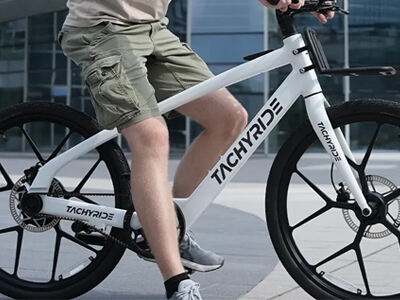Spor ve eğlence faaliyeti olarak değil, aynı zamanda sürdürülebilir bir ulaşım aracı olarak da övgü alan bisiklet kullanmak uzun süredir devam ediyor. Ergonomi ve insan-merkezli tasarım farkındalığı arttıkça, yeni bir bisiklet çağının başladığını görmekteyiz: İnsan Biyomekaniği Bisikleti. Bu devrimci kavram, insan vücutlarının bilimsel anlayışını en son mühendislik teknolojisiyle birleştirerek mevcut en verimli, rahat ve etkili bisiklet deneyimini sunar.
Ergonomik Bisikletin Geleceğini Anlama
Human Mechanics Bisikletlerinin Arkasındaki Kavram
Temelinde, bir Human Mechanics Bisikleti (MBIKE) insan vücutlarının biyomekaniğiyle mükemmel uyumlu olacak şekilde tasarlanmıştır. Geleneksel bisikletler, bireysel farklılıkları dikkate almadan ortalama vücut ölçüleri için statik tasarımlara sahiptir. Buna karşılık, MBIKE'lar özelleştirilebilir ve bisikletçinin en iyi şekilde uydurulmasını sağlar. Bu özel yaklaşımla, gerilim minimuma indirgenir ve verimlilik maksimize edilir; bu da bireylerin daha uzun mesafeleri daha az yorgunluk ve rahatsızlık ile kat etmesine olanak tanır.
Temel Özellikler ve Yenilikler
1. Uyumsal Çerçeve Geometrisi: Human Mechanics Bisikletinin çerçevesi şekli ve boyutu, binicinin benzersiz vücut oranlarına uyum sağlamak için ayarlanabilir. Mühendisler, kullanıcının anatomisini ve sürüş tarzını analiz etmek için gelişmiş yazılımlar kullanır ve çerçeveleri gerçek zamanlı veya önceden belirlenmiş yapılandırmalar aracılığıyla uyarlar. Bu tasarım esnekliği, daha iyi pozisyon sağlar ve yaralanma riskini azaltır.
2. İleri Düzeyde Amorti Sistemleri: Geleneksel katı çatılarla karşılaştırıldığında, MBIKE'ler sıklıkla bireysel biniciler için hassaslaştırılabilen amorti sistemleri entegre eder. Bu amorti sistemleri, hem rahatlığı artırır hem de binicinin eklem ve kaslarını korurarak düzensiz zeminlerden kaynaklanan titreşimi ve şokları azaltır.
3.Ergonomik Bileşenler: Kol emme yerlerinden sadede kadar, her bileşen insan mekaniği göz önüne alınarak tasarlanmıştır. Kol emme yerleri, writs gerilimini azaltmak için ayarlanabilir kavramalar içerebilirken, sadeler eşit şekilde binicinin kalçasını desteklemek için tasarlanır ve baskı noktalarını azaltır. Pedallar, doğal ayak hareketini kabul etmek için değişken derecelerde float içerir, tekrarlayan stres yaralanmalarının riskini azaltır.
4.Modüler Ayarlabilirlik: MBIKE'ler, insan vücutlarının ve buna bağlı olan ihtiyaçların zamanla değiştiğini fark ederek sıklıkla modüler bileşenler kullanır. Bu, kolu, koltuğu ve pedalı gibi parçaların binicinin değişim gösteren gereksinimlerine uyum sağlamak için kolayca değiştirilebilir veya ayarlanabilir anlamına gelir ki, bu da kullanımın uzun ömürlülüğünü ve uyumunu sağlar.
Ergonomik Bisiklete Dair Bilim
Herhangi bir ergonomik tasarımın ana amacı, bir kişinin makineyle arasındaki simbiyotik ilişiği geliştirmektir. MBIKE'ler bağlamında, bu bisikletin biomekanik ve fiziolojik yönlerine dikkatlice bakmaktadır. Araştırmalar, yanlış boyutlu bisikletin kronik yaralanmalara neden olduğundan önemli bir faktör olduğunu göstermektedir. Kinesyoloji ve ergonomiden elde edilen bilgileri entegre ederek, MBIKE'ler bu sorunları kökünden çözer.
Örneğin, biomekanik modelleme entegrasyonu, mühendislerin bisiklet sürerken uzuv hareketi için en uygun açıları belirlemelerine olanak tanır. Bu veriler, insan vücutlarının doğal hareket yollarını göz önüne alan pedal konumları ve krank uzunlukları gibi tasarım unsurlarına dönüşür. Ayrıca, yükleme eşit olarak birden fazla eklem ve kas grubuna dağılmaya odaklanılması, bisikletçinin daha az fizyolojik zarar ile daha verimli güç üretmesini sağlar.
İnsan Mekaniği Bisikletlerinin Faydaları
1.Artırılmış Rahatlama: Ergonomik tasarım, binicinin doğal bir pozisyon korumasını sağlayarak boyun, sırt ve omuz ağrısının olasılığını azaltır. Destekleyici bileşenler, vücudun ihtiyaçlarına cevap vererek daha keyifli bir sürüş deneyimi sunar.
2.Geliştirilmiş Performans: Binici ile bisiklet arasındaki enerji transferini daha verimli hale getirerek, MBIKE'lar genel performansı geliştirebilir. Bisikletçiler daha etkin bir şekilde pedal çevirebilir, tepe tırmanışını daha kolay yapabilir ve daha az yoruma rağmen daha yüksek hızlarla ilerleyebilir.
3.Yaraalanma Riskinin Azaltılması: Özelleştirme ve ergonomik tasarım, diz ağrısı, karpal tunel sendromu ve sedyalar acısı gibi yaygın bisiklet yaralanmalarını önlemede yardımcı olur. Bisiklet, binicinin vücut yapısına uyum sağlar, tersi şekilde değil; bu da daha güvenli ve sağlıklı bisiklet sürme alışkanlıkları doğurur.
4.Sürdürülebilirlik: MBIKE'larda kullanılan kaliteli ve dayanıklı bileşenler, atık oluşturmayı azaltarak daha uzun süre kullanılmasını amaçlamaktadır. Ayrıca, bisiklete binmek kendiliğinden ekolojik bir aktivite olup daha düşük karbon ayak izine katkıda bulunur.
Bisikletlemenin Geleceği
Human Mechanics Bisikleti, konfor, verimlilik ve güvenliğin ön planda olduğu bisikletlerin geleceğine doğru önemli bir adım temsil eder. Teknoloji ve insan biyomekaniği üzerine olan bilgimizin ilerlemesiyle birlikte, bu alandaki yenilik potansiyeli neredeyse sınırsızdır.
Yakın gelecekte, bisikletle ilgili pozisyon ve verimlilik hakkında gerçek zamanlı geri bildirim sağlayan dijital sağlık izleyicilerinin entegrasyonunu görebiliriz. Daha ileride, yapay zekanın insan odaklı tasarım ile birleşimi, binicinin fiziolojik durumlarına ve çevresel koşullara aktif olarak uyum sağlayabilen bisikletlere yol açabilir.
Sonuç olarak, Human Mechanics Bisikletleri sadece geçici bir akım değil, bisikletleri nasıl anladığımızı ve tasarladığımızı değiştiren temel bir dönüşümü temsil eder. Mühendisliği insan fizyolojisiyle uyumlu hale getirerek, bisiklet sürmeyi daha keyifli, erişilebilir ve sürdürülebilir hale getirdiği bir gelecek için bir ön iz bırakır.



